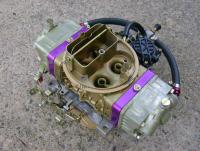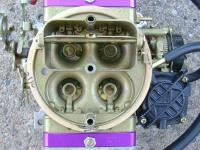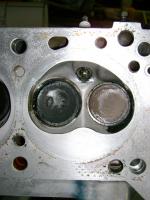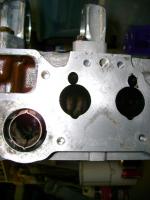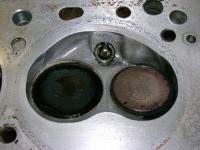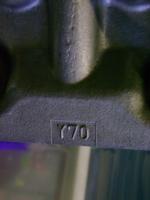Search the Community
Showing results for tags 'holley'.
-
Background: When I got the car, it was a stock L26 with flat top carburetors. Three years ago, I changed out the carburetors for round top carburetors. For a while I noticed that after I had been running at freeway speeds, returning to stop-and-go traffic would result in hesitation during acceleration until it seemed like the car cooled down for a while. I enriched carburetors some more, and the problem seemed to go away. In February, I did an engine swap, putting in an L28 with an N47 Maxima head. Since the head wasn't configured for a mechanical fuel pump, I just ran the stock electric fuel pump. The hesitation returned, even with enriching the carburetors even more. I installed a fuel pressure gauge and found the pressure to be around 2.5 PSI. I changed out to a small Holley fuel pump (12-147), but the pressure dropped down to 2 PSI. Saturday I changed out the fuel pump for a bigger Holley fuel pump with a fuel pressure regulator (L:12-802-1). The FPR was installed downstream of the fuel rail. At first, the pressure was at 12 PSI. I opened the small orifice on the exit of the fuel rail. The pressure dropped to 6 PSI. Moving the adjustment on top of the FPR did not raise or lower the fuel pressure. I moved the FPR to in front of the fuel rail. The pressure held at 4 PSI. I thought I was good to go. Today I drove the car to help a friend with his Z. It did fine on the trip down. It did fine when I took him in a ride in the car. When I was leaving, the old problem returned. I checked the fuel pressure when I got home. It was below 2 PSI. I moved the FPR back to downstream of the fuel rail. Pressure was 2.5 PSI. Again, using the adjustment screw did not change the pressure. I am out of ideas.
-
For your consideration is a Holley carb conversion package with everything you need to run. Includes 240Z SU type intake manifold, 4 barrel conversion manifold, 1 Holley 390 cfrm in good condition with fresh rebuild, 1 spare Holley 390 carb of unknown condition (may need rebuild), linkage arm, and chrome air cleaner with filter. The 4 barrel conversion manifold is an odd beast for sure. Looks like it was made for a blow through turbo. It really drops the carb down low and has connections on the bottom for some kind of cooling (or heating?) system. Really interesting piece. I took this off a ITS race car we are currently restoring. Going back to SU's. I tried to take lots of pictures. Asking $500 for entire setup and free shipping in continental US.
-
Hi there, I've just finished building a new four barrel carburettor for my next development phase on my L28. The Holley originally started off as a 'run of the mill' 450 cfm (list 4548) vacuum secondary four barrel. Since then, it has been extensively modified and upgraded to suit my requirements. Some of the features it has are: 4 corner idle mixture adjustment Downleg booster venturis Electric choke Reworked metering blocks to include adjustable power valve channel restriction and idle/off idle circuits via screw in jets Percy's adjustable metering blocks for primary and secondary main fuel Centre hung fuel bowls Quick change secondary spring unit and A blended 600 cfm 4 barrel base plate. The next phase of engine development includes a new cylinder head where I'm concentrating on improving low engine speed torque. The head will have a much better quench around the valves and will boost my compression from 8.3 to 9.9 to one. The ports are round exhaust with liners like the P79 heads and the intake ports are smaller than the N42. (30mm's versus 34.7mm's). The intake manifold is an older candilabra single carburettor type, Nissan code E30. This manifold will be adapted to suit the Holley carburettor and it has 30mm runners, matching perfectly the Y70 head which originally came off an L20A ET engine in Japan. The head is currently at a headshop being reconditioned with guidelines not to touch the ports other than to clean the bowl region and improve the valve seat areas for better flow. A special smooth radius valve job will be tried instead of the usual 5 angle. It came with strong recommendation so I said yes to that. The head should be ready fairly soon. I'm very curious (and committed!) to giving this a go. I will be doing a series of dyno runs soon to establish my baseline at the moment and then gradually change over to the new parts to see their effect on performance. Remember, my aim is to improve torque at low rpms, so talk about big ports, valves and camshafts may not be what is needed, unless you can convince me otherwise! Sure, I would still like it to rev to say 5000rpm, but it is what happens when you change to the next gear higher that interests me, what happens at between say 2000 to 4000 rpm's! Read Torque Monster! Your thoughts?



